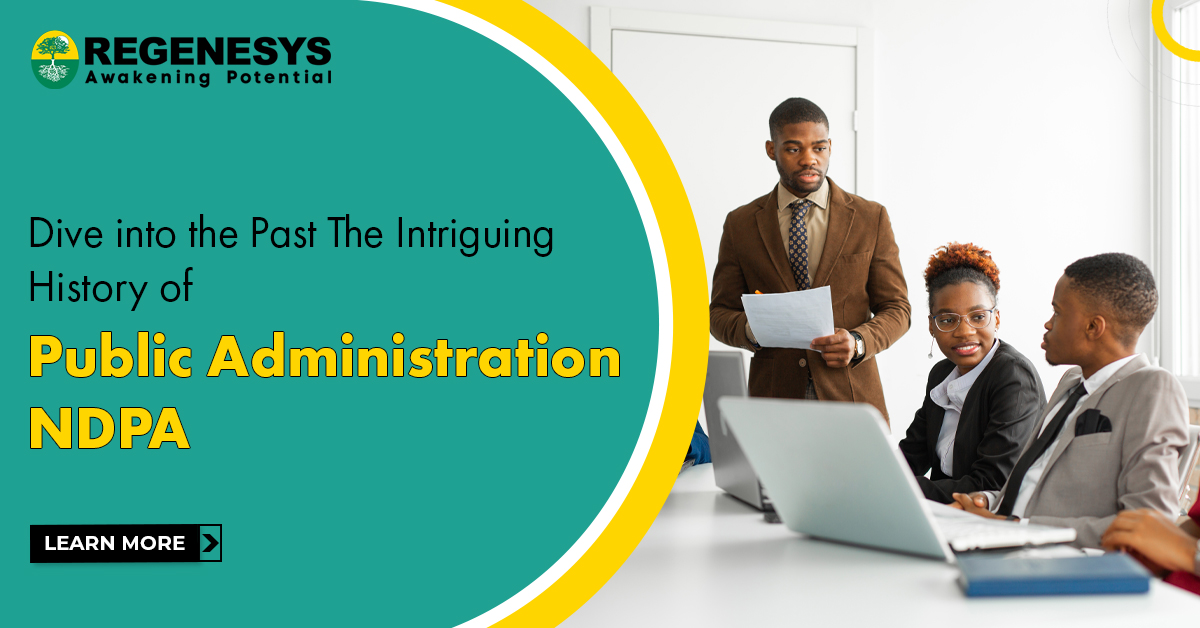Public administration, the backbone of governance, has undergone a remarkable evolution, shaping societies across centuries. Its roots trace back to ancient civilisations, where governing structures were crucial for societal order. Throughout history, public administration has evolved significantly, influenced by diverse cultures, ideologies, and socio-political contexts.
Table of Contents
- Feudal Systems and Administrative Developments
- Transition to Bureaucracy: Renaissance and Early Modern Period
- Mediaeval to Modern Era: Administrative Reforms
- Regenesys: Nurturing Future Leaders in Public Administration
- Conclusion
- FAQS
Feudal Systems and Administrative Developments
During the Middle Ages, feudalism dominated Europe, and administrative structures were intertwined with feudal hierarchies. Feudal lords managed local affairs, including justice, taxation, and land distribution. However, this era also saw the emergence of rudimentary administrative systems in monasteries, cities, and trade centres, setting the stage for future bureaucratic developments.
Transition to Bureaucracy: Renaissance and Early Modern Period
The Renaissance period marked a shift towards centralised bureaucratic structures in Europe. With the rise of nation-states, monarchs aimed to consolidate power, leading to the establishment of bureaucratic institutions. This period witnessed the evolution of administrative systems aimed at enhancing governance efficiency.
Enlightenment and the Birth of Modern Administration
The Enlightenment era brought forth intellectual movements advocating rationality, individual rights, and governance reforms. Thinkers like Montesquieu and Rousseau contributed to administrative theory, emphasising the separation of powers and the rule of law. These ideologies laid the groundwork for modern administrative theories and the conceptualisation of bureaucracy.
Industrial Revolution: Administrative Challenges
The Industrial Revolution presented administrative challenges due to urbanisation, industrial growth, and social transformations. Governments faced issues related to labour, urban planning, public health, and infrastructure, necessitating administrative reforms to address societal concerns.
Progressive Era and Administrative Reforms
The late 19th and early 20th centuries witnessed the Progressive Era, characterised by administrative reforms in the United States. Figures like Woodrow Wilson advocated for professionalising public administration, promoting efficiency, expertise, and merit-based systems.
Mediaeval to Modern Era: Administrative Reforms
Feudalism and Governance
The mediaeval period witnessed feudal systems and decentralised governance. Administrative roles were closely tied to land ownership, with feudal lords managing local affairs.
Renaissance and Administrative Thought
The Renaissance era sparked a resurgence of administrative thought. Thinkers like Machiavelli and Bodin deliberated on governance, emphasising the state’s role in maintaining order and prosperity.
Scientific Management by Taylor
The 20th century saw the emergence of scientific management theories by Taylor, focusing on efficiency, standardisation, and hierarchical structures in administration.
Evolution of New Public Management
In the late 20th century, the concept of New Public Management (NPM) surfaced, advocating for market-oriented reforms, decentralisation, and performance-based governance.
Globalisation and Technological Advancements
Globalisation and technological advancements have reshaped public administration. Governments strive for transparency, digital governance, and citizen engagement.
Challenges in Public Service
Challenges like bureaucratic inefficiencies, ethical dilemmas, and adapting to a rapidly changing world remain focal points in contemporary public administration.
Regenesys: Nurturing Future Leaders in Public Administration
At Regenesys School of Public Management, the National Diploma in Public Administration (NDPA) programme equips individuals with historical insights and modern administrative skills. The curriculum focuses on imparting knowledge, fostering critical thinking, and preparing graduates for diverse roles in public service.
Conclusion
To delve deeper into the history of public administration and explore Regenesys’ commitment to grooming future leaders in this domain, visit Regenesys’ NDPA programme page. Discover how pursuing education with Regenesys School of Public Management can unlock a deeper understanding of public administration’s evolution and prepare graduates for impactful roles in the field.
FAQS
1. What sets Regenesys’ National Diploma in Public Administration (NDPA) apart from other programmes?
Regenesys’ NDPA stands out due to its holistic approach that combines historical insights with modern administrative skills. It emphasises critical thinking and practical knowledge, preparing graduates for versatile roles in the public service sector.
2. How does Regenesys integrate historical perspectives into the NDPA curriculum?
The NDPA curriculum at Regenesys School of Public Management incorporates historical milestones in public administration evolution, providing students with a comprehensive understanding of administrative development. Through case studies and discussions, students explore the relevance of historical contexts in contemporary governance.
3. What career paths can graduates pursue after completing the NDPA at Regenesys?
Graduates can explore various career avenues, including roles in governmental bodies, international organisations, non-profit sectors, and consultancy firms. They are equipped with the skills necessary for positions such as administrative officers, policy analysts, programme managers, and public relations officers.
4. How does the NDPA at Regenesys address contemporary challenges in public administration?
The NDPA programme at Regenesys focuses on equipping students with problem-solving skills to tackle contemporary challenges. Discussions on bureaucratic inefficiencies, ethical dilemmas, and adapting to a changing world prepare graduates to navigate complexities in the field.
5. What teaching methodologies does Regenesys employ to enhance NDPA students’ learning experience?
Regenesys employs a mix of interactive sessions, case studies, and real-world simulations to facilitate a dynamic learning experience. This approach encourages practical application of theoretical knowledge, enhancing students’ readiness for real-world administrative challenges.








4 Comments
It’s best to take part in a contest for one of the best blogs on the web. I will advocate this website!
I’m very happy to read this. This is the type of manual that needs to be given and not the random misinformation that’s at the other blogs. Appreciate your sharing this best doc.
When I initially commented I clicked the -Notify me when new comments are added- checkbox and now every time a comment is added I get 4 emails with the identical comment. Is there any method you possibly can remove me from that service? Thanks!
Very fantastic info can be found on web site.